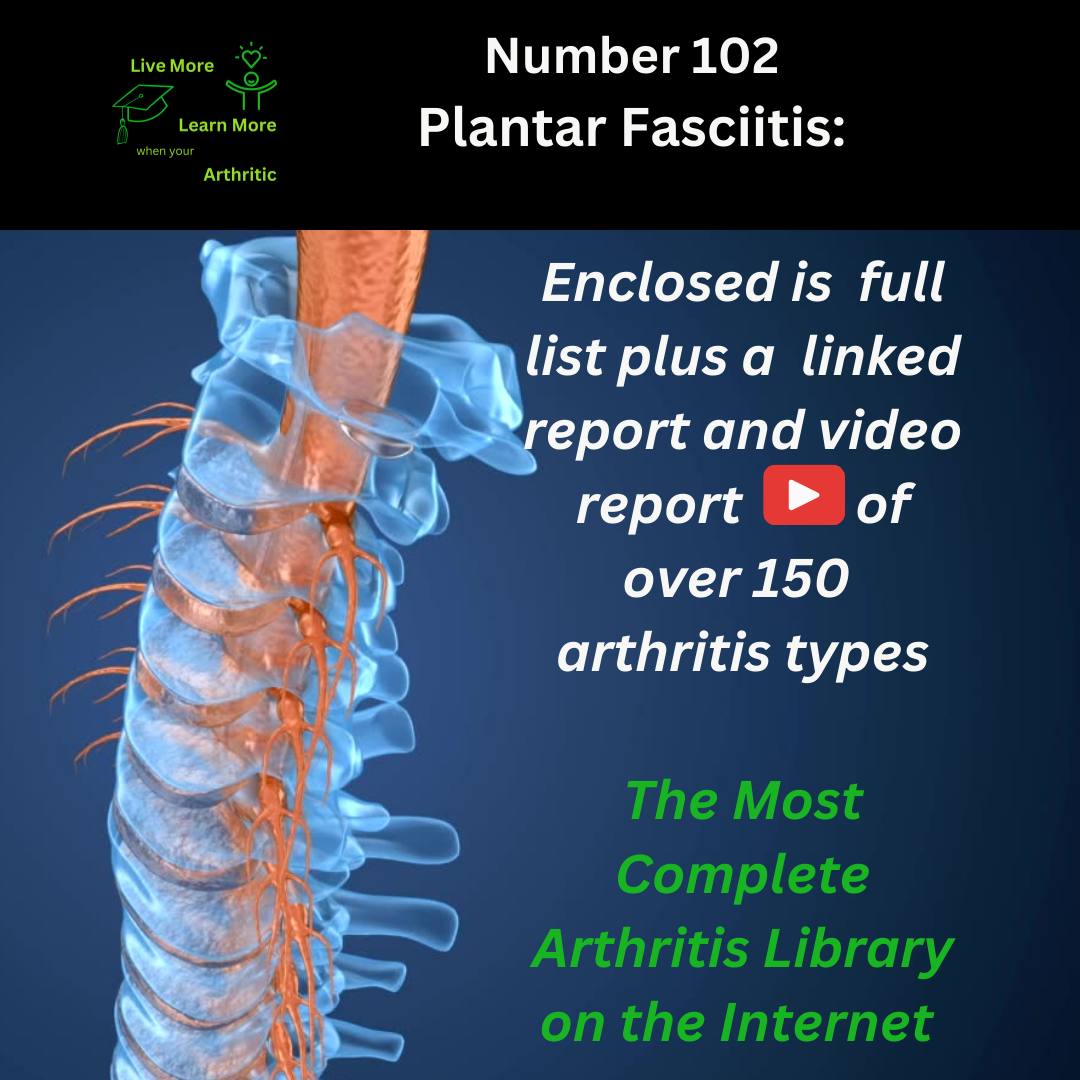
Plantar Fasciitis: Number 102 of around 150 types of Arthritis
Walking on Eggshells: Navigating Plantar Fasciitis
Plantar Fasciitis is a common foot condition that causes pain and inflammation in the plantar fascia, a thick band of tissue that runs along the bottom of the foot, connecting the heel bone to the toes. This condition can be debilitating, affecting mobility and daily activities. Let’s explore the intricacies of Plantar Fasciitis and how it impacts individuals of all ages.
Plantar Fasciitis primarily affects the heel and arch of the foot. The hallmark symptom is heel pain, especially upon waking or after prolonged periods of standing or walking. The pain may worsen with activity and improve with rest, but it can become persistent if left untreated.
Understanding Remission and Disease Description
Remission from Plantar Fasciitis is possible with appropriate treatment and lifestyle modifications. Rest, stretching exercises, orthotic devices, and physical therapy can alleviate symptoms and prevent recurrence. However, chronic cases may require more aggressive interventions.
Causes and Triggers
The exact cause of Plantar Fasciitis is multifactorial and can include factors such as repetitive strain, overuse, improper footwear, obesity, or biomechanical issues like flat feet or high arches. Activities that place excessive stress on the plantar fascia, such as running or standing for long periods, can trigger or exacerbate symptoms.
Impact on Range of Motion and Quality of Life
Plantar Fasciitis can lead to decreased range of motion in the foot and ankle, particularly in dorsiflexion (lifting the foot upward). Persistent pain and stiffness can limit physical activities and impact overall quality of life, affecting mobility and emotional well-being.
Age of Onset and Gender Influence
Plantar Fasciitis commonly affects adults between 40 to 60 years old, but it can occur at any age. Both men and women are susceptible to this condition, although women may be more prone due to footwear choices and hormonal factors.
Complications and Interconnected Conditions
Untreated Plantar Fasciitis can lead to chronic heel pain, altered gait mechanics, and secondary issues such as knee, hip, or back pain due to altered posture and movement patterns.
Inflammation, Tenderness, and Tissue Damage
Inflammation and tenderness along the bottom of the foot are characteristic symptoms of Plantar Fasciitis. Prolonged inflammation can lead to micro-tears in the plantar fascia, exacerbating pain and impairing tissue healing.
Proactive Management and Lifestyle Changes
A proactive approach to managing Plantar Fasciitis includes stretching exercises, wearing supportive footwear, using orthotic inserts, and maintaining a healthy weight to reduce strain on the feet. Physical therapy and targeted strengthening exercises can improve foot mechanics and prevent recurrence.
Quality of Life and Long-Term Outlook
With diligent management and lifestyle modifications, individuals with Plantar Fasciitis can achieve a higher quality of life by minimizing symptoms and maintaining foot health. Adhering to a comprehensive treatment plan can facilitate recovery and prevent long-term complications.
Possible Complications and Associated Risks
Complications of Plantar Fasciitis may include chronic pain, foot deformities, and reduced mobility if left untreated. Early intervention and proactive management are crucial to preventing progression and optimizing foot function.
 Awareness of Interconnected Conditions
Awareness of Interconnected Conditions
Plantar Fasciitis may coexist with other foot conditions such as Achilles tendinitis, bursitis, or stress fractures. Understanding these interconnected conditions can facilitate accurate diagnosis and tailored treatment plans to address underlying issues.
In summary, Plantar Fasciitis is a manageable foot condition that requires proactive intervention and lifestyle adjustments to alleviate symptoms and improve overall foot health. By addressing contributing factors and adhering to a structured treatment plan, individuals can regain mobility and enjoy an active lifestyle free from foot pain and limitations.


